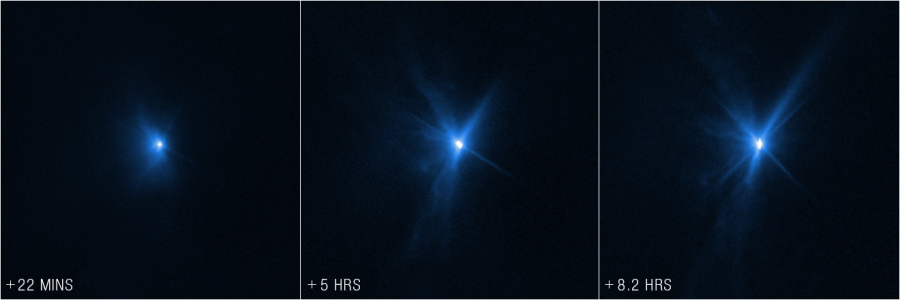NASA’s DART Mission: What is it, and Why is it Important?
Science: NASA, ESA, Jian-Yang Li (PSI); image processing: Alyssa Pagan (STScI)
Hubble images taken after DART successfully hit Dimorphos.
On September 26, NASA’s DART (Double Asteroid Redirection Test) successfully hit its asteroid target. This mission is the world’s first planetary defense technology demonstration and is NASA’s first attempt to move an asteroid in space.
The target was the asteroid moonlet Dimorphos. It is a small body that orbits a much larger asteroid, Didymos. Hitting Dimorphos required incredible precision and accuracy. The spacecraft used DRACO (Didymos Reconnaissance and Asteroid Camera for Optical Navigation) along with an advanced guidance, navigation, and control system that works with SMART Nav (Small-Body Maneuvering Autonomous Real-Time Navigation) to enable DART to distinguish between Dimorphos and Didymos, and hit its expected target. NASA will monitor Dimorphos to confirm that DART did change its orbit. They only expect the orbit to be altered by about 1%, or about 10 minutes.
So why is this important? DART proves that NASA can successfully hit an asteroid with a spacecraft to deflect it, a technique called kinetic impact. This mission is also part of NASA’s overall planetary defense strategy, and it demonstrates a way to protect Earth from an Earth-bound asteroid or comet. An Earth-bound asteroid or comet would have a devastating impact and change life on Earth as we know it. If one was ever found, a mission like DART would be able to redirect the asteroid or comet and prevent it from hitting Earth. We are no longer powerless to stop this type of natural disaster.
by Hailey Baughman ’24, Contributing Writer
24hbaughman@montroseschool.org











